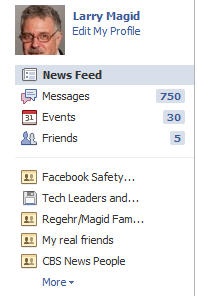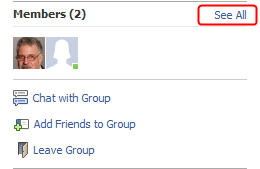Last week Facebook announced the new Groups feature which is designed to limit communications to a sub-set of your Facebook friends.
In an interview, Facebook CEO Mark Zuckerberg told me “there are a lot of things you want to share with all your friends at once but there are also things that you only want to share with your family or some co-workers.” He said that “If you don’t have a way to do that, you just won’t share them at all. But now that people have tools to do that very easily, we expect that a lot of people will use Facebook as their tool to communicate and stay in touch with these groups of people that are really important to them.”
But when it comes to privacy, Groups is a double-edge sword. It can also jepordize your privacy.
In theory, Groups provides users additional privacy because anything you post in a grup is seen only by its members which can be a much smaller group than your entire list of Facebook friends. It could be your running group, the people at work or perhaps your immediate family.
But in practice, Groups can quickly get out of hand because any member of a group can add members on their own friend list even if they’re not friends with anyone in the group, including the Group’s administraror. So, if you create a group, let’s say of your baseball team, there is nothing to stop the left fielder from inviting his cousin who isn’t actually on the team. And once his cousin is in, that person can add friends of his own so that 9 person baseball team could grow big enough to fill a ballpark.
I know about this first hand because the day after Groups was launched, I was invited into what started out as a small group but soon people in the group started adding their friends and within hours it grew to several hundred member, including a lot of people I don’t know.
There are ways to manage Groups. Any member of the group can always see who else is in the group and remove yourself if you don’t want to be there. Also, the administrator can remove people from the group but only after the fact. The administrator does not get to approve or reject new members.
Also, people who are added to groups by others don’t get a chance to either accept or reject the invitation. They’re added immediately and their name shows up on the roster unless and until they remove themselves. Facebook CEO Mark Zuckerberg was reportedly added to (and later quit) a group pretending to represent NAMBLA – the North American Man/Boy Love Association).
Another issue with groups is that, by default, the membership list is public information thought there is a way to create a “secret group.”
There are three types of groups: Public, Open and Secret.
- Public groups where both the membership list and the contents of the group is accessible to anyone.
- Closed groups –the default setting — where the contents are private but the membership list is public so it’s possible to search for Closed groups and know who is in them.
- Secret groups where the member list, the contents and the existence of a group is to designate it as “Secret.”
Another annoyance with groups is that, by default, all messages posted to the group are sent to the email address associated with your Facebook account. That can be a good feature if the traffic level is moderate but it can get overwhelming.
Know the Groups you’re in
When someone adds you to a group you will get an email that includes a link to the group’s Facebook page. Click on that link to make sure it’s a group you want to be in. If not, click “Leave Group” in upper right corner. You can also see what groups you’re in in the left-most column on your home page:

You should periodically click on the “See All” link near the top left of any Group you’re in. If you don’t want to be sharing informatoin with people on that list or if you’re not comfortable being associated with that group, you should consider leaving the group

Be the first to comment